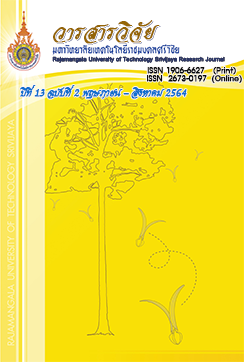Effect of Temperature and Delay Time for Curing on Compressive Strength of Geopolymer Mortar Ground Fly ash
Keywords:
compressive strength, delay time curing, ground fly ash, geopolymer, mortar, pozzolanAbstract
This research examines the potential in developing ground fly ash as a geopolymer material. Geopolymer mortar ground fly ash with constant liquid to ash ratio was used for testing radiant flow value. Effect of temperature, delay time of curing, concentration of sodium hydroxide (NaOH) and sodium silicate (Na2SiO3) to sodium hydroxide (NaOH) ratio on compressive strength were investigated. Test results showed that the workable flow of geopolymer mortar was in the range of 107-113% and was dependent on the ratio by mass of sodium silicate to NaOH and concentration of NaOH. The geopolymer mortar ground fly ash with high strength was obtained with concentration of NaOH of 15M (15Molar, 15M) with the sodium silicate to NaOH ratio by weight of 1.5. Using ground fly ash as a geopolymer mixture, the compressive strength was gained by leaving the sample for 1 h (delay time) before being put into the oven, and the optimum curing temperature was 65 °C in 1 day curing period.
References
ASTM. 2005a. ASTM C136. Standard Test Method for Sieve Analysis of Fine and Coarse Aggregates. Annual Book of ASTM Standard. American Society for Testing and Materials, West Conshohocken, PA.
ASTM. 2005b. ASTM C 230-C 230M. Standard Specification for Flow Table for Use in Tests of Hydraulic Cement. Annual Book of ASTM Standard. American Society for Testing and Materials, West Conshohocken, PA.
Chindaprasirt, P., Chareerat, T. and Sirivivatnanon, V. 2007. Workability and strength of coarse high calcium fly ash geopolymer mortar. Cement and Concrete Composites 29: 224-229.
Chindaprasirt, P., Rukzon, S. and Sirivivatnanon, V. 2008. Resistance to chloride penetration of blended Portland cement mortar containing palm oil fuel ash, rice husk ash and fly ash. Construction and Building Materials 22(5): 932-938.
Chindaprasirt, P. and Rukzon, S. 2015. Strength and chloride penetration of Portland cement mortar containing rice husk ash and ground river sand. Materials and Structures 48(11): 3771-3777.
Chindaprasirt, P., Sujumnongtokulb, P. and Posi, P. 2019a. Durability and mechanical properties of pavement concrete containing bagasse ash. Materials Today: Proceedings 17: 1612-1626.
Chindaprasirt, P., Kasemsiri, P., Poomsrisa, P. and Posi, P. 2019b. Fluidized bed coalbark fly ash geopolymer with additives cured at ambient temperature. International Journal of GEOMATE 16(54): 29-35.
Davidovits, J. 1999. Chemistry of Geopolymeric Systems, Terminology. 9-39. In Proceedings of the 2nd International Conference. Geopolymer Institute, Saint-Quentin.
Guo, X., Shi, H. and Dick, WA. 2010. Compressive strength and microstructural characteristics of class C fly ash geopolymer. Cement and Concrete Composites 32: 142-147.
Posi, P., Kasemsiri, P., Lertnimoolchai, S. and Chindaprasirt, P. 2019. Effect of fly ash fineness on compressive, flexural and shear strengths of high strength-high volume fly ash jointing mortar. International Journal of GEOMATE 16(54): 36-41.
Rovnanik, P. 2010. Effect of curing temperature on the development of hard structure of metakaolin-based geopolymer. Construction and Building Materials 24: 1176-1183.
Rukzon, S. and Chindaprasirt, P. 2011. Utilization of bagasse ash in high-strength concrete. Materials and Design 34: 45-50.
Rukzon, S., and Chindaprasirt, P. 2018. Strength, chloride penetration and corrosion resistance of ternary blends of Portland cement self-compacting concrete containing bagasse ash and rice husk-bark ash. Chiang Mai Journal Science 45(4): 1863-1874.
Rukzon, S. and Chindaprasirt, P. 2014. Strength and porosity of bagasse ash-based geopolymer mortar. Journal of Applied Sciences 14(6): 586-591.
Sathonsaopark, A., Chindaprasirt, P. and Pimraksa, K. 2009. Workability and strength of lignite bottom ash geopolymer mortar. Journal of Hazardous Materials 168: 45-50.
Sukmak, P., Horpibulsuk, S., Shen, SL. Chindaprasirt, P. and Suksiripattanaponga, C. 2013. Factors influencing strength development in clay-fly ash geopolymer. Construction and Building Materials 47(1): 1125-1136.
Downloads
Published
How to Cite
Issue
Section
License
The content and information in the article published in Journal of Rajamangala University of Technology Srivijaya It is the opinion and responsibility of the author of the article. The editorial journals do not need to agree. Or share any responsibility.







